
Pros and Cons of Using the Cash Basis Accounting Method
 There are different accounting methods that you can use to track your business’s finances. Two of the most popular include the accrual method and the cash basis method. The accrual accounting method involves recording transactions — both revenue and expense transactions — when they occur. The cash basis accounting method, on the other hand, involves recording transactions your business receives the payment or sends the payment. There are several pros of cons of using the cash basis accounting method.
There are different accounting methods that you can use to track your business’s finances. Two of the most popular include the accrual method and the cash basis method. The accrual accounting method involves recording transactions — both revenue and expense transactions — when they occur. The cash basis accounting method, on the other hand, involves recording transactions your business receives the payment or sends the payment. There are several pros of cons of using the cash basis accounting method.
Pro: Easier
When compared to the accrual accounting method, the cash basis accounting method is easier. You can use it by evaluating your business’s bank account. The cash basis accounting method focuses on recording transactions when your business receives payments or sends payments. If you discover a new transaction in your business’s bank account, you can record it. The cash basis accounting method is particularly easy, making it a popular choice among small businesses.
Con: Doesn’t Reveal All Liabilities
One of the disadvantages to using the cash basis accounting method is that it doesn’t reveal all liabilities. Liabilities can occur when your business purchases a product or service but doesn’t immediately pay for it. With the cash basis accounting method, you’ll only record expense transactions when your business makes a payment. Therefore, liabilities such as this may go unnoticed — at least for a short period of time.
Pro: Tax Savings
You may be able to take advantage of tax savings by using the cash basis accounting method. The Internal Revenue Service (IRS) doesn’t necessarily offer lower tax rates to businesses that use the cash basis accounting method. Nonetheless, it may lower your business’s taxes. With the cash basis accounting method, you can wait to record transactions when the money enters or leaves your business’s bank account.
Con: Restricted Usage
There are restrictions regarding which businesses can use the cash basis accounting method. The IRS, for instance, typically prohibits businesses from using this alternative accounting method if they are classified as a corporation You can still use the cash basis accounting method if your business is a sole proprietorship or an LLC. If it’s a corporation, though, you’ll have to use the accrual accounting method.
When choosing an accounting method, you should weigh the pros and cons. The cash basis accounting method is easy and potentially offers tax savings benefits. With that said, it fails to reveal all liabilities and it’s allowed by the IRS for some businesses.
Did this tutorial work for you? Let us know in the comments section below!
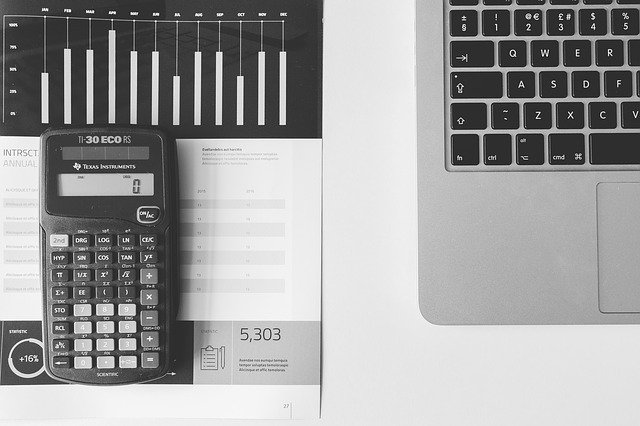
An Introduction to the Accounting Equation
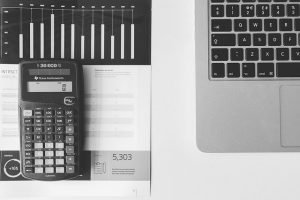 Have you heard of the accounting equation? It’s commonly used in double-entry accounting. If your business uses the double-entry accounting method, you may want to use the accounting equation as well. The accounting equation, in fact, is the heart of the double-entry accounting method. Before using it, though, there are a few things you should know about the accounting equation and how it works.
Have you heard of the accounting equation? It’s commonly used in double-entry accounting. If your business uses the double-entry accounting method, you may want to use the accounting equation as well. The accounting equation, in fact, is the heart of the double-entry accounting method. Before using it, though, there are a few things you should know about the accounting equation and how it works.
What Is the Accounting Equation?
The accounting equation is the foundation for the double-entry accounting method. Also known as the balance sheet equation, it expresses the relationship between a businesses’ assets, liabilities and owner’s equity. With the accounting equation, you can rest assured knowing your business’s balance sheet is, in fact, balanced.
Of course, you’ll only need to use it if your business uses the double-entry accounting method. The double-entry accounting method requires the use of the accounting equation. If your business uses the single-entry accounting method, you can skip the accounting equation. The single-entry accounting method is easier than its double-entry counterpart. With the single-entry accounting method, transactions are recorded in a single place. The double-entry accounting method differs in the sense that it involves records of transactions in at least two places.
How to Use the Accounting Equation
You can use the accounting equation by adding up your business’s liabilities and owner’s equity. The accounting equation lives up to its namesake by featuring an equation for accounting. The equation consists of assets = liabilities + owner’s equity.
Assets, of course, are tangible and intangible items of value that your business owns. Common examples of assets include property, cash, inventory, accounts receivables, equipment and supplies. The accounting equation also takes into account liabilities. Liabilities are a debt. While accounts receiveables are considered assets, accounts payables are considered liabilities. Finally, there’s owner’s equity. Owner’s equity is the collective investment owners have made in your business.
In Conclusion
Double-entry accounting requires the use of the accounting equation. With this formula, you can ensure that your business’s balance sheet is, in fact, balanced. The accounting equation consists of assets = liabilities + owner’s equity. Adding up your business’s liabilities and owner’s equity should yield its total assets. When using the double-entry accounting method, you should take advantage of the accounting equation to ensure that your business’s balance sheet is balanced.
Did this tutorial work for you? Let us know in the comments section below!

An Introduction to Net Profit in Accounting
 Net profit is an important financial metric for all businesses. Regardless of what type of goods or services your business sells, you’ll need to track its net profit. Net profit, however, isn’t the same as gross profit. It’s a unique financial metric that offers an accurate look at your business’s overall profitability. For a better understanding of net profit, including how to calculate it, keep reading.
Net profit is an important financial metric for all businesses. Regardless of what type of goods or services your business sells, you’ll need to track its net profit. Net profit, however, isn’t the same as gross profit. It’s a unique financial metric that offers an accurate look at your business’s overall profitability. For a better understanding of net profit, including how to calculate it, keep reading.
What Is Net Profit?
Net profit refers to how much money your business generates during a given period after paying for all its expenses and other costs. It’s also known as “bottom line.” With net profit, you can see how much money your business profited. It takes into account your business’s revenue as well as your business’s expenses and other costs.
You can calculate your business’s net profit for a given period by adding up all of its revenue and substrating it by all of its expenses and other costs for that period. If your business generated $100,000 last month and its expenses were $30,000, its net profit for that month would be $70,000.
Why Net Profit Is Important
Net profit is important because it provides insight into profitability. There are other financial metrics available. Many of them, however, only look at revenue and not expenses.
Generating revenue is undoubtedly important. You can’t run a successful business without generating revenue. With that said, high expenses and related costs can counter the otherwise positive benefits of high revenue. If your business’s expenses surpass its revenue, it won’t generate profits. Your business will essentially burn money until its revenue increases and/or its expenses decrease. With new profit, you can gauge your business’s profitability. Net profit will reveal whether your business is truly making a profit. It will also reveal how much profit your business is making.
What About Gross Profit?
Contrary to common belief, net profit isn’t the same as gross profit. Gross profit is a different financial metric. While gross profit still takes into account your business’s revenue, it doesn’t include all of your business’s revenue.
Gross profit reflects your business’s revenue for a given period minus its cost of goods sold. Cost of goods sold is just one type of expense. There are many other expenses that your business will likely incur. For a complete view of your business’s financial health, you should calculate its net profit.
Have anything else that you’d like to add? Let us know in the comments section below!

What Are Fixed Costs in Accounting?
 Costs are an important part of accounting. Regardless of their operations or size, all businesses have costs. You can’t run a business without paying for goods and services. There are different types of costs, however, one of which being fixed. Fixed costs are still expenses, but they have unique characteristics that distinguish them from other expenses. What are fixed costs in accounting exactly?
Costs are an important part of accounting. Regardless of their operations or size, all businesses have costs. You can’t run a business without paying for goods and services. There are different types of costs, however, one of which being fixed. Fixed costs are still expenses, but they have unique characteristics that distinguish them from other expenses. What are fixed costs in accounting exactly?
Overview of Fixed Costs
Fixed costs are expenses that remain static and unchanged regardless of sales volume. The number of sales your business generates may affect certain costs. Other costs, though, will remain unchanged. Fixed costs fall under the latter category. Whether your business generates more sales or fewer sales, its fixed costs will remain unchanged.
Common types of fixed costs include the following:
- Lease payments
- Electric bills
- Water bills
- Payroll
- Insurance
- Taxes
- Interest fees on debt
With fixed costs, your business’s sales volume won’t affect how much you spend. They are known as “fixed costs” because they are fixed. Your business’s sales volume will inevitably change. Whether it goes up or down, though, your business’s fixed costs will remain the same.
Fixed vs Variable Costs
There are also variable costs in accounting. Variable costs are essentially the opposite of fixed costs. While fixed costs remain static and unchanged regardless of sales volume, variable costs live up to their namesake by changing. As your business’s sales volume increases or decreases, its variable costs will change.
Generally speaking, an increase in sales volume will lead to higher variable costs. A decrease in sales volume, on the other hand, will lead to lower variable costs. Inventory is typically considered a variable cost. If your business sells products — whether in store or online — you’ll have to purchase those products from a vendor. This inventory will directly affect your business’s variable costs. Variable costs are simply expenses that increase or decrease in response to your business’s sales volume.
In Conclusion
Business-related expenses can often be classified as either fixed costs or variable costs, depending on whether they are influenced by sales volume. Fixed costs are expenses that aren’t influenced by sales volume. In comparison, variable costs are expenses that are directly influenced by sales volume. By understanding the differences between them, you can keep cleaner accounting reports that accurately reflect your business’s true expenses.
Have anything else that you’d like to add? Let us know in the comments section below!

What Is Accountants Receivable Turnover Ratio?
 Does your business allow customers to pay after the delivery or completion of their purchased products or services? Many businesses allow their customers to make purchases on credit. In other words, they don’t require payment upfront. Customers can purchase goods or services from these businesses while paying them at a later date. When doing so, however, you should consider tracking your business’s accounts receivable turnover ratio. What is accounts receivable turnover ratio exactly, and why is it important?
Does your business allow customers to pay after the delivery or completion of their purchased products or services? Many businesses allow their customers to make purchases on credit. In other words, they don’t require payment upfront. Customers can purchase goods or services from these businesses while paying them at a later date. When doing so, however, you should consider tracking your business’s accounts receivable turnover ratio. What is accounts receivable turnover ratio exactly, and why is it important?
The Basics of Accounts Receivable Turnover Ratio
Accounts receivable turnover ratio is a measurement of your business’s cash flow. It takes into account your business’s credit-based sales — products or services purchased by customers on credit — as well as your business’s average accounts receivable. Using this information, you can gain a better understanding of your business’s overall cash flow.
How to Calculate Accounts Receivable Turnover Ratio
To calculate your business’s accounts receivable turnover ratio, take your business’s total credit-based sales for a fiscal period and divide that number by your business’s average accounts receivable. Average accounts receivable is the beginning balance and the ending balance divided by two. The purpose of using average accounts receivable is to see how quickly and effectively your business is able to collect money owed from its customers.
Why You Should Track Accounts Receivable Turnover Ratio
Invoices are a common element of accounts receivable. If you allow a customer to purchase a product or service on credit, you’ll typically need to send him or her an invoice. These outstanding and unpaid invoices are factored into your business’s accounts receivable. The longer it takes you to collect money from a customer, the higher your business’s accounts receivable will be.
Tracking your business’s accounts receivable turnover ratio, though, allows you to see how quickly and effectively your business is able to collect money from customers. More importantly perhaps, tracking your business’s accounts receivable turnover ratio will ultimately provide insight into its cash flow.
In Conclusion
Not all businesses need to track their accounts receivable turnover ratio. Rather, only those that allow customers to buy products or services on credit can benefit from tracking this metric. Accounts receivable turnover ratio looks at a business’s ability to collect money owed by its customers versus the total amount of sales processed on credit.
Have anything else that you’d like to add? Let us know in the comments section below!

An Introduction to the Hybrid Accounting Method
 Not all businesses use the same accounting method. Some of them use the cash basis accounting, whereas others use the accrual basis accounting. There’s also the hybrid accounting method, which combines elements from both the cash basis and accrual basis accounting methods. If you’re thinking about using this alternative accounting method, you might be wondering how it works. Below is an introduction to the hybrid accounting method.
Not all businesses use the same accounting method. Some of them use the cash basis accounting, whereas others use the accrual basis accounting. There’s also the hybrid accounting method, which combines elements from both the cash basis and accrual basis accounting methods. If you’re thinking about using this alternative accounting method, you might be wondering how it works. Below is an introduction to the hybrid accounting method.
What Is the Hybrid Accounting Method?
The hybrid accounting method is an alternative bookkeeping process that features elements of the cash basis accounting method and the accrual accounting method. To better understand how it works, you must familiarize yourself with the two aforementioned accounting methods. The cash basis accounting method involves recording transactions when customers pay your business and when your business pays its customers. The cash accrual accounting method, on the other hand, involves recording money when your business earns it or pays it (e.g. sending or receiving an invoice).
Advantages of Using the Hybrid Accounting Method
There are several advantages of using the hybrid accounting method. It’s a better choice for predicting cash flow, for instance. With the hybrid accounting method, you’ll have the freedom to record transactions either at the time when money is exchanged or when your business it or pays it. Therefore, many businesses prefer the hybrid accounting method because it allows them to predict their future cash flow with greater accuracy. You can essentially change between the cash basis and the accrual accounting methods when using the hybrid accounting method.
Disadvantages of Using the Hybrid Accounting Method
Using the hybrid accounting method, on the other hand, can be somewhat difficult. The Internal Revenue Service (IRS) has specific requirements for this alternative accounting method. If you choose the hybrid accounting method for your business, for instance, you’ll have to create a separate set of records using the cash basis method. The IRS requires businesses to use the cash basis method if they plan on using the hybrid method.
Some businesses may discover that it’s difficult to keep track of transactions when using the hybrid accounting method. As previously mentioned, the hybrid accounting method allows you to record transactions using either the cash basis or accrual method. When switching between these two traditional accounting methods, you’ll have to remember which method you used and for which transactions.
Have anything else that you’d like to add? Let us know in the comments section below!

An Introduction to Quick Ratio in Accounting
 When researching accounting processes, you may come across quick ratio. Millions of businesses calculate their respective quick ratio for accounting purposes. Also known as an acid test, quick ratio provides into a business’s cashflow and, thus, its ability to satisfy debt and liabilities. As a business owner, however, you might be wondering what quick ratio means exactly. This post offers an introduction to quick ratio and how it works in accounting.
When researching accounting processes, you may come across quick ratio. Millions of businesses calculate their respective quick ratio for accounting purposes. Also known as an acid test, quick ratio provides into a business’s cashflow and, thus, its ability to satisfy debt and liabilities. As a business owner, however, you might be wondering what quick ratio means exactly. This post offers an introduction to quick ratio and how it works in accounting.
What Is Quick Ratio?
Quick ratio is a measurement of how easily your business can pay its debt and liabilities. It essentially reflects your business’s liquidity. The greater your business’s liquidity — meaning it can easily convert assets into cash — the higher its quick ratio will be.
How to Calculate Quick Ratio
There are a few different ways to calculate quick ratio. One of the most common formulas involves adding your business’s cash, accounts receivables and other short-term assets, followed by dividing that number by your business’s short-term debt and liabilities. You can perform this quick ratio calculation for any given period. To determine your business’s quick ratio for last year, for example, just perform the aforementioned calculation using last year’s data.
A quick ratio of 1 means your business’s short-term assets and short-term liabilities were equal for the reporting period. A quick ratio of 2, on the other hand, means your business’s short-term assets were twice as much as its short-term liabilities for the reporting period. Any quick ratio below 1 indicates that your business’s short-term assets were less than its short-term liabilities during the reporting period. You should typically strive for a quick ratio of 1 or higher because it symbolizes positive liquidity.
Why Quick Ratio Is Important
Why should you care about your business’s quick ratio? Quick ratio is all about liquidity. And the greater your business’s liquidity, the easier it will be for your business to satisfy short-term debt and liabilities. Nearly all businesses incur debt. Debt is particularly common during the early stages of a new business. Assuming your business is liquid, you can easily convert its short-term assets into cash, which you can then use to pay off your business’s short-term debt and liabilities.
There are other ways to measure your business’s liquidity. Quick ratio is popular among business owners and accountants, though, because of its simplicity. You can calculate using only your business’s short-term assets and its short-term liabilities. A high quick ratio means that your business has more short-term assets than its short-term liabilities.
Have anything else that you’d like to add? Let us know in the comments section below!

What Is a Personal Paycheck Program (PPP) Loan?
 The U.S. Small Business Administration (SBA) offers several financing programs to help small businesses stay afloat. In addition to traditional SBA loans, there are Personal Paycheck Program (PPP) loans available to small businesses. Launched in the early part of 2020, PPP loans are an integral part of the Coronavirus Air, Relief and Security Act (CARES Act). If you’re thinking about applying for a PPP loan, however, there are several things you need to know about them.
The U.S. Small Business Administration (SBA) offers several financing programs to help small businesses stay afloat. In addition to traditional SBA loans, there are Personal Paycheck Program (PPP) loans available to small businesses. Launched in the early part of 2020, PPP loans are an integral part of the Coronavirus Air, Relief and Security Act (CARES Act). If you’re thinking about applying for a PPP loan, however, there are several things you need to know about them.
The Basics of PPP Loans
PPP loans are SBA-backed loans that are designed to assist small business owners in covering the cost of payroll, as well as other expenses, during the coronavirus pandemic. The coronavirus, of course, disrupted the operations of countless businesses. Small businesses were particularly hurt, with many of them struggling to pay their employees. This prompted the federal government to launch the PPP. PPP is a federal financing program that allows small businesses to draw money from banks to cover payroll and other expenses.
Benefits of Using a PPP Loan
You might be wondering what benefits, if any, PPP loans offer over traditional loans. The main benefit is forgiveness. PPP loans can be forgiven if certain conditions are met. The same can’t be said for traditional loans. If you obtain a traditional loan, you’ll have to pay it back — and you’ll also be charged interest on the principle, which you’ll have to pay back as well. PPP loans, on the other hand, may be forgiven.
In other for a PPP loan to be fully forgiven, you must use at least 60% of it to cover the cost of your small business’s payroll. With that said, PPP loans can be partially forgiven. If you only spend 50% of a PPP loan to pay your small business’s employees, for example, half of the PPP loan will be forgiven. If you spend 40% of a PPP loan on payroll, conversely, 40% of it will be forgiven.
PPP loans are also relatively easy to obtain. Even though they are backed by the SBA, they are distributed by banks. You can apply for a PPP loan at a local bank. Assuming you meet the necessary requirements, the bank will provide you with a PPP loan. You can use this loan to cover payroll and other expenses. Some or all of the PPP loan may even be forgiven.
Have anything else that you’d like to add? Let us know in the comments section below!
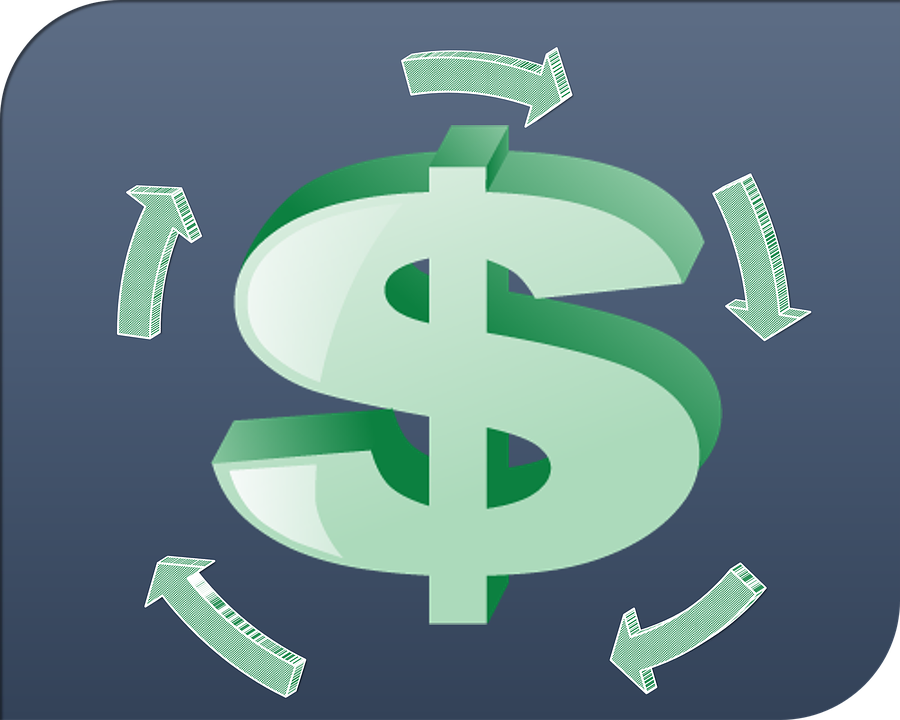
What Are Cash Equivalents in Accounting?
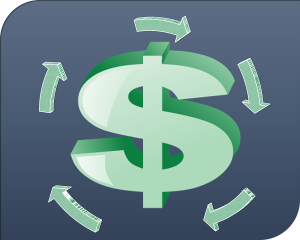 You can’t run a successful business without performing various accounting processes. Accounting is necessary for all businesses. Whether you run a sole proprietorship — meaning you don’t have any employees — or a large business, you’ll need to record and track financial transactions. Accounting, of course, can be confusing. You’ll probably come across certain terms with which you are unfamiliar, one of which being cash equivalents. What are cash equivalents in accounting exactly?
You can’t run a successful business without performing various accounting processes. Accounting is necessary for all businesses. Whether you run a sole proprietorship — meaning you don’t have any employees — or a large business, you’ll need to record and track financial transactions. Accounting, of course, can be confusing. You’ll probably come across certain terms with which you are unfamiliar, one of which being cash equivalents. What are cash equivalents in accounting exactly?
Overview of Cash Equivalents
Cash equivalents are defined as short-term assets that can be quickly and easily converted into cash. They are considered one of the primary asset classes in accounting. Like all assets, cash equivalents have monetary value. For an asset to be considered a cash equivalent, though, it must be highly liquid, meaning you can quickly and easily convert it into cash.
The conversion of a cash equivalent into cash is typically done through a sale. If your business needs additional cash, you can sell one or more of its cash equivalents. You’ll lose the cash equivalent, but you’ll gain cash from the sale.
Common types of cash equivalents include the following:
- Treasury bills
- Government bonds
- Certificates of deposits (CODs)
- Commercial paper
- Money market funds
- Stock shares
Why Cash Equivalents Are Important
You might be wondering why cash equivalents are important. For starters, they are a prime indicator of your business’s financial health. With cash equivalents, your business will have strong and healthy finances. As previously mentioned, cash equivalents can be quickly and easily converted into cash. Therefore, if your business enters a rough patch and requires additional cash, you’ll have the freedom to sell some of its cash equivalents.
Another reason cash equivalents are important is because they can be used as collateral to secure loans and other forms of debt financing. Many lenders require collateral. If your business doesn’t have credit — or if it has bad credit — you may struggle to get approved for a loan. Cash equivalents offer a solution. You can use some of your business’s cash equivalents as collateral.
In Conclusion
To recap, cash equivalents are short-term assets that you can quickly and easily convert into cash. They are used to gauge the financial health of businesses while also offering a means of collateral for loans and other forms of debt financing.
Have anything else that you’d like to add? Let us know in the comments section below!
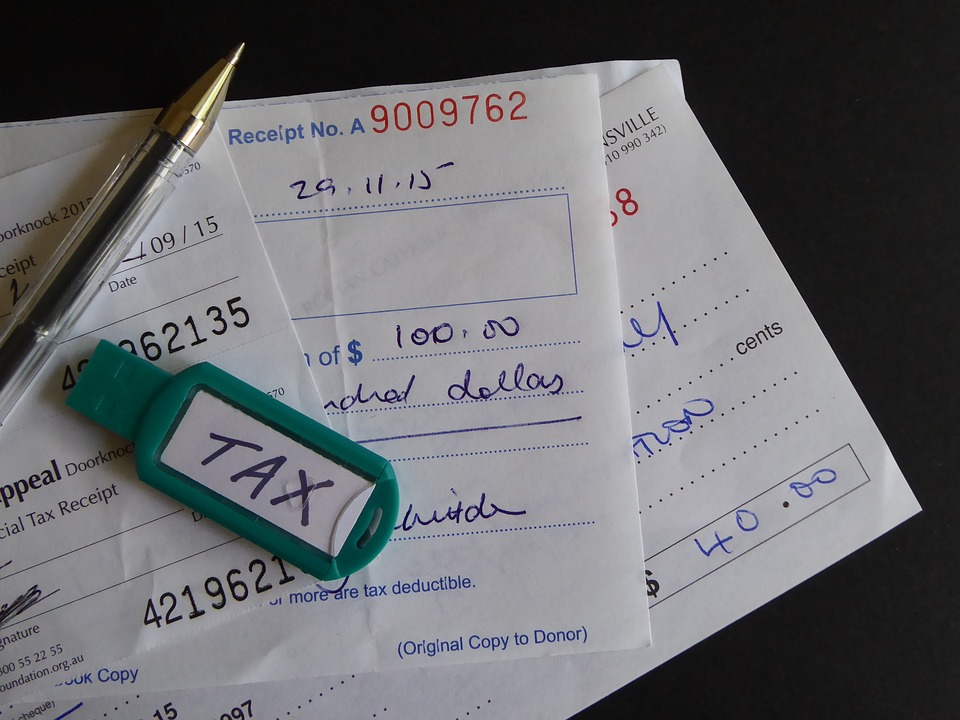
How to Print W-2 Forms in Quickbooks
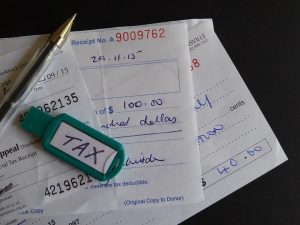 Does your business have one or more employees on its payroll? If so, you’ll need to provide them with a W-2. In the United States, employers are required by law to provide all employees with a W-2. This otherwise common tax form breaks down the earnings of a given employee so that he or she can file taxes. While you can always create W-2 forms using an external program, Quickbooks offers an easier and faster solution. Using Intuit’s accounting software, you can easily and quickly print W-2 forms for your business’s employees.
Does your business have one or more employees on its payroll? If so, you’ll need to provide them with a W-2. In the United States, employers are required by law to provide all employees with a W-2. This otherwise common tax form breaks down the earnings of a given employee so that he or she can file taxes. While you can always create W-2 forms using an external program, Quickbooks offers an easier and faster solution. Using Intuit’s accounting software, you can easily and quickly print W-2 forms for your business’s employees.
Steps to Printing a W-2 Form in Quickbooks
To print a W-2 form in Quickbooks, log in to your Quickbooks account and go to “Payroll Tax Center.” This section contains all the features for managing your business’s payroll taxes, including its W-2 forms. From the home screen, select “Employees,” followed by “Payroll Center.” Next, select “Print Forms & W-2s,” after which you’ll be asked to enter your payroll PIN. Your payroll PIN is the unique passcode that’s associated with your Payroll Tax Center. If you don’t remember it, you’ll need to recover your payroll PIn before proceeding.
After following the steps listed above, you should see a tab titled “W-2.” From this tab, you can scroll through your business’s list of employees. Choose the employee or employees for whom you wish to print a W-2 form. Selecting an employee under the “W-2” tab will result in a checkmark being added next to his or her name. You can then click the “Open/Save Selected” option, which should reveal a printing window.
Other Tips for Printing W-2 Forms in Quickbooks
When printing W-2 forms in Quickbooks, you’ll have to specify a reason for printing. Quickbooks provides one of three reasons from which you can choose: including “first time,” “replacements,” or “for your own records.” This won’t affect how the W-2 forms are formatted. Rather, it’s used for reference purposes. With that said, you should still choose the most appropriate reason when printing W-2 forms in Quickbooks.
Keep in mind that Quickbooks uses Adobe Reader for W-2 forms. When you create a W-2 form, Quickbooks will save the form as an Adobe Reader document. You’ll need to print the W-2 form by loading it in Adobe Reader, after which you can choose “File” and then “Print.”
Did this tutorial work for you? Let us know in the comments section below!
